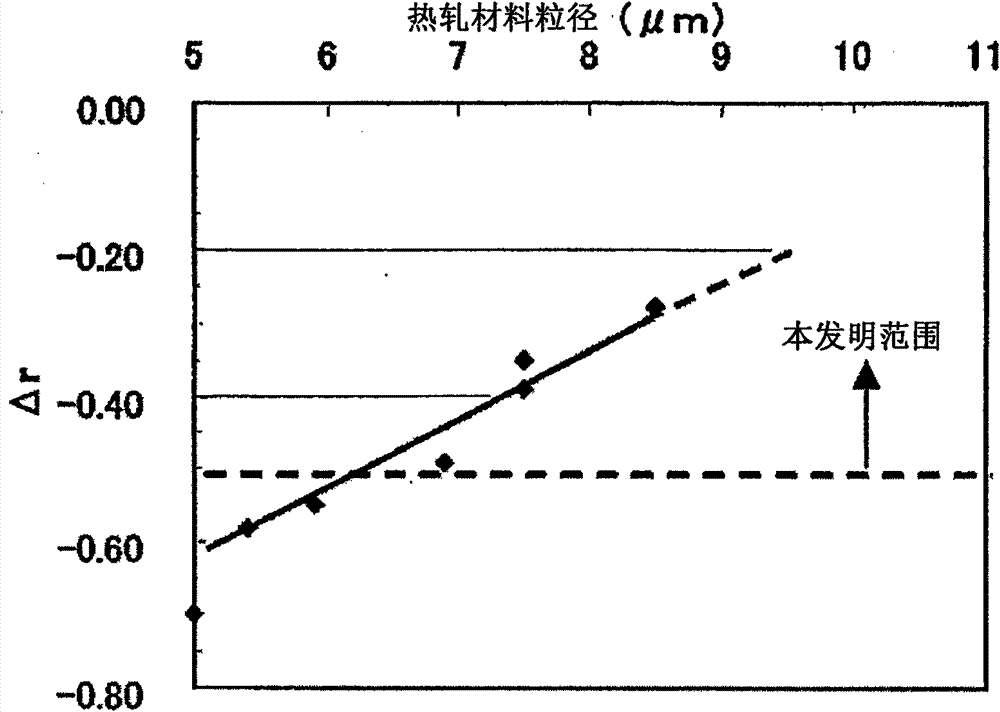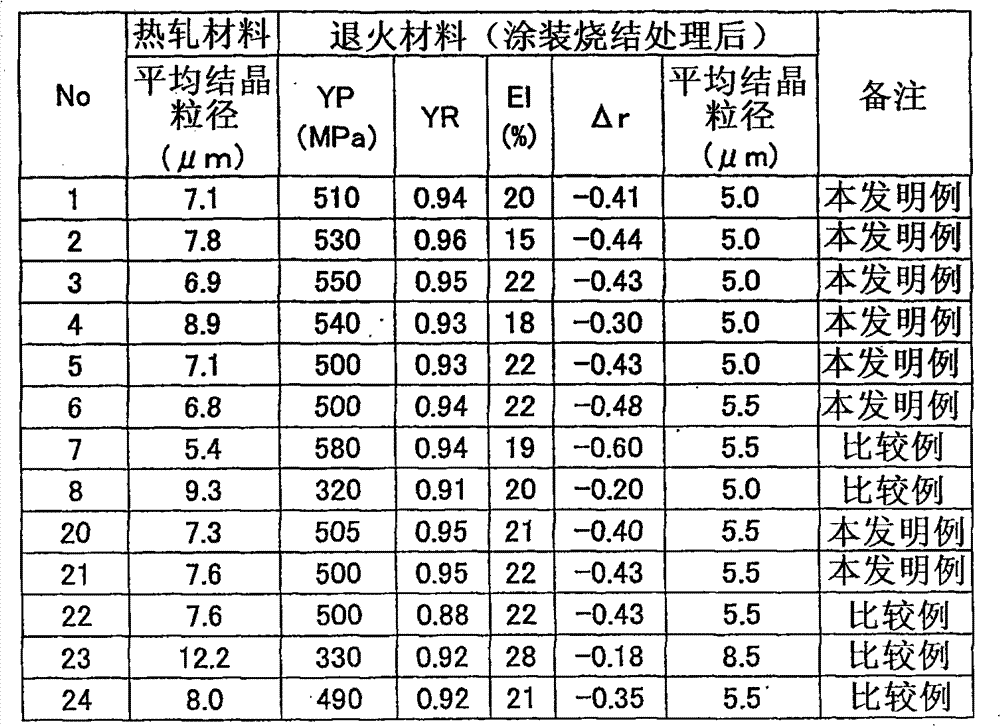Steel sheet for cans, hot-rolled steel sheet to be used as the base metal and processes for production of both
A manufacturing method and steel sheet technology, which are applied in the field of manufacturing steel sheets for cans and hot-rolled steel sheets for their base materials, can solve the problems of increased manufacturing processes, poor workability of DR materials, and high production costs
- Summary
- Abstract
- Description
- Claims
- Application Information
AI Technical Summary
Problems solved by technology
Method used
Image
Examples
Embodiment 1
[0116] A steel containing the composition shown in Table 1 with the balance consisting of Fe and unavoidable impurities was smelted in a converter to obtain a billet. After reheating the obtained steel slab at 1250 degreeC, hot rolling was started. Hot rolling is carried out at a finishing temperature of 880°C to 900°C, cooled at an average cooling rate of 20°C to 40°C / s before coiling, and coiled at a coiling temperature of 620°C to 700°C. Next, after pickling, cold rolling is performed at a rolling reduction of about 90 to 94%, to manufacture a thin steel sheet of 0.17 to 0.2 mm. The obtained thin steel sheet was heated to 690 to 750° C. at a heating rate of 15° C. / second, and continuous annealing was performed at 690 to 750° C. for 20 seconds. Next, after cooling, temper rolling is performed so that the rolling ratio (measured by elongation) becomes 1.5% or less, and normal chrome plating (electroplating) is continuously performed to obtain a non-tin-plated steel sheet. I...
Embodiment 2
[0132] A steel containing the composition shown in Table 3 (same as No. 1 of Example 1) and the balance consisting of Fe and unavoidable impurities was melted in a real machine converter to obtain a billet. After reheating the obtained steel slab at 1250 degreeC, hot rolling was started. Hot rolling is carried out at a finishing temperature of 830°C to 900°C, cooled at an average cooling rate of 16°C to 45°C / s before coiling, and coiled at a coiling temperature of 580°C to 720°C. Next, cold rolling is performed at a rolling reduction of 75 to 94%, to produce a thin steel plate of 0.15 to 0.18 mm. The obtained thin steel sheet was heated to 630-740° C. at a heating rate of 20° C. / second, and continuous annealing was performed at 630-740° C. for 20-30 seconds. Next, after cooling, temper rolling was performed so that the rolling ratio was 1.5% or less, and normal chrome plating was continuously performed to obtain a non-tin-plated steel sheet. The detailed manufacturing condit...
PUM
| Property | Measurement | Unit |
|---|---|---|
| yield strength | aaaaa | aaaaa |
| yield point | aaaaa | aaaaa |
| elongation | aaaaa | aaaaa |
Abstract
Description
Claims
Application Information
 Login to View More
Login to View More - R&D
- Intellectual Property
- Life Sciences
- Materials
- Tech Scout
- Unparalleled Data Quality
- Higher Quality Content
- 60% Fewer Hallucinations
Browse by: Latest US Patents, China's latest patents, Technical Efficacy Thesaurus, Application Domain, Technology Topic, Popular Technical Reports.
© 2025 PatSnap. All rights reserved.Legal|Privacy policy|Modern Slavery Act Transparency Statement|Sitemap|About US| Contact US: help@patsnap.com



